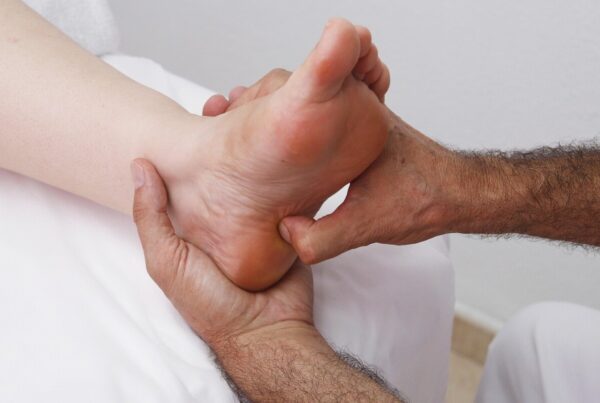What is piriformis syndrome?
Piriformis syndrome is a condition that affects both the muscles and the nerves in the buttock region. Specifically, piriformis syndrome occurs when the piriformis muscle, which is located deep in the buttock region, spasms and causes buttock pain. This may or may not irritate the sciatic nerve, which can create further symptoms. This may include pain, numbness and tingling along the back of the leg and into the foot (similar to sciatic pain).
Piriformis muscle anatomy
The piriformis is a small, band-like muscle located deep in the buttock region – specifically, it sits behind the gluteus maximus. It originates from the sacrum and inserts into the greater trochanter of the femur (outer hip bone). This piriformis muscle is constantly working and can work overtime in athletes such as runners. It has three main roles:
- Rotation of the hip and leg
- Balancing with one foot lifted off the ground
- Stabilising the pelvic region
The important structure to be aware of in this region, especially when it comes to piriformis syndrome, is the sciatic nerve. The sciatic nerve exits the spine in the lumbar region, and travels down through the hip, buttock and down the leg.
Who is at risk for piriformis syndrome?
Risk factors for piriformis syndrome include:
- Muscle spasm within the piriformis muscle. This can occur due to irritation within the piriformis itself, or from irritation of the structures that are close by such as the hip or sacroiliac joint.
- Injury or spasm may cause the piriformis muscle to tighten
- Injury or spasm may cause the piriformis muscle to swell
- Bleeding in the area local to the piriformis muscle
What does piriformis syndrome feel like?
Typically, patients with piriformis syndrome describe pain or tenderness in the buttock region. This may or may not be accompanied by nerve pain down the leg. Some commonly described symptoms include:
 A dull or sharp ache in the gluteal region
A dull or sharp ache in the gluteal region- Pain down the back of the thigh, calf, foot. This pain may also involve sensations of tingling, burning, pins and needles or numbness
- Pain after prolonged sitting
- Pain after prolonged walking or running
- Decreased range of motion of the hip compared to the other side
- Pain going up or down stairs
- Pain that can be referred to the hip joint
How can Physiotherapy help with piriformis syndrome?
- First of all a physiotherapist can confirm the diagnosis of piriformis syndrome, as there are many other conditions that can be going on with similar symptoms.
- Physiotherapy can provide relief of the tight muscle with soft tissue treatment. This may include massage, trigger point release or dry needling.
- Stretching and strengthening exercises can be taught and prescribed, which should help reduce the pain and prevent the recurrence of this condition.
If you are concerned that you may have piriformis syndrome, book in to see one of our experiences Physios at Bend + Mend in order to get the best outcome and limit your chance of recurrence.





